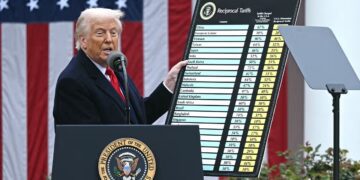Reflections on the amazing life of Benjamin Franklin, born on January 17, 1706 A.D.
On February 18, 1762, at Spring Gardens in England, a 19-year-old musician named Marianne Davies gave a concert that introduced the world to a brand new, fascinating musical instrument: a row of delicate tuned glass bowls in a beautifully-finished wooden chest, mounted horizontally on a long spindle, called a glass armonica.
As she came from a musical family, Miss Davies herself was already somewhat well known around London’s musical circles. Her father was a composer and flautist, and she and her sister had been performing – both singing and playing instruments – since childhood.
But this particular concert was news: the glass armonica was like no instrument anyone had ever seen or heard before, producing sounds so high and ethereal that performers and audiences alike were spellbound whenever it was played (in fact, it even was rumored to be so otherworldly that it might endanger the health of its performers and audiences, though no scientific support for such silly claims was ever found).
Most musical instruments belong to certain families – reeds, strings, horns, and so forth, often with multiple variations on the same theme. But the glass armonica was new and different, and was so amazing that it became immensely popular across Europe in the second half of the 18th century, though it fell out of favor just as quickly, early in the 19th, and the ones that remain are primarily just museum pieces today.
The glass armonica was designed, in fact, by Benjamin Franklin, the greatest inventor of the 18th century, and even though it never caught on in America, its history is intricately connected to American independence.
Benjamin Franklin, Renaissance Man
Benjamin Franklin was born and raised in Boston, then moved to Philadelphia at seventeen, and spent most of his life as a Pennsylvanian, though he was to live in Europe, representing various colonial governments, for three decades of his long life… and that’s how he came to be in England when he invented this unusual instrument.
In the mid-1750s, he went to England for several years (1757-1762), to represent the people of Pennsylvania, in their efforts to gain the colony’s freedom from the Penn family (they wanted to become a normal royally-chartered colony like their neighbors).
Then, after returning to Philadelphia just long enough to be elected to the Pennsylvania Assembly and even to serve as its Speaker, Dr. Franklin was sent back to England again (1764-1775), this time representing not only his own colony, but over the years, several others as well, as a group – adding Georgia, New Jersey and Massachusetts to his portfolio by the time he completed his dozen years in this role.
Finally, once the War of Independence broke out – immediately upon his return from that last posting – he was naturally chosen to be a delegate to the Continental Congress, which soon appointed him as its ambassador to France, so he spent almost the entire war in Paris (1776-1785).
Even before Dr. Franklin went to England for his first official posting back in the 1750s, he had spent decades in public life, as a longtime member of the common council and clerk of the colonial assembly, among other offices. He was already a successful businessman, having been a printer, author, and newspaper publisher, and his scientific pursuits had brought him fame on both sides of the Atlantic in the 1740s.
So, when he went to England as a colonial representative, he was the perfect choice to show that Americans were not the uncouth settlers that some Europeans imagined American colonists to be, but were instead every bit as educated, civilized, and sophisticated as their peers in Europe.
A Musical Life
A fundamental part of 18th century civilization was music, both in education and lifelong appreciation. Since they didn’t have practical recording devices or radios in those days – neither was to come along for another century and a half – if they wanted music, they had to make their own – as we say today, “live.”
We know that Benjamin Franklin played the guitar and the harp, and certainly the violin, the most convenient of the three for travel, and one of the most popular instruments of the era. He was even a composer; among his many diverse talents, Dr. Frankin wrote numerous compositions for string quartets.
Today, our modern parties often include background music, played on radios, stereos, or tablets… the hiring of live performers at a private party is an expense usually limited to the upper class. By contrast, in those days, it was more common for the hosts or guests themselves to sit at the harpsichord or pick up their violins and play.
But they did have concerts too, particularly “command performances” for royalty and other such formal events, at which professional musicians performed the music of the day.
It was during the first of one of his three stints in Europe that Dr. Franklin first encountered “musical glasses” at such a party, and – like so many random things he encountered – they sparked an idea, not just in his musician’s heart, but in his inventor’s head as well.
In the 1740s and 50s, a new “party trick” appeared on the social scenes of London and Paris, a stunt that continues to this day: Someone fills glasses with various levels of water, and makes music by running moistened fingers across the lip of each glass. This is obviously not an easily perfected art, since water evaporates, and each glass is different; even if the table full of glasses was perfectly in tune at the beginning of the evening, it might fall out of tune as the night wore on (especially if any of the guests accidentally took a drink!
While the concept of musical glasses was first documented hundreds of years earlier in Persia, it first caught on in Europe in the 1740s, so it was a pretty new fad when Dr. Franklin arrived in London as Pennsylvania’s agent, and he immediately started thinking about how to improve on the concept – to make it more dependable, more predictable, possibly even to eliminate the need to worry about “tuning” them with water levels at all.
Franklin worked with glassblowers to try out his ideas. He settled on eliminating the water entirely, and instead setting a progression of 37 glass bowls of ascending size on their sides. In Franklin’s system, a hole was drilled in the center of each bowl, and the bowls were strung along an iron rod, with cork in between each one. Each bowl was then painted along the rim to identify each note, and the whole apparatus was mounted in a formal wooden case, so that the assembly could be spun by working a foot pedal.
The instrument was delicate, and very challenging to play, so learning it was a daunting task… but a talented musician who mastered it could play up to ten notes at the same time, and the music was like nothing else available anywhere.
Between Franklin’s personal fame and the reputation it earned from its early performances, some famous composers rose to the challenge of writing music specifically for the glass armonica.
In 1791, for example, shortly before his death, Wolfgang Amadeus Mozart composed the Adagio in C expressly for the glass armonica, and included the instrument in quintets he worked on at the same time, the Adagio and Rondo, and the Fantasia in C.
In 1815, the great Ludwig von Beethoven composed a melodrama in which the narration is accompanied exclusively by the armonica.
The list of composers of armonica music includes many of the significant composers of the period, among them Johann Naumann, Giambattista Martini, Johann Hasse, Gaetano Donizetti, and at least a hundred more. Surprisingly, after about 150 years of general obscurity, the glass armonica is again enjoying a minor surge of popularity, having been used in a number of major compositions since the 1980s.
During the fifty-or-so years of its original popularity, 5000 were built on Franklin’s design, and many of Europe’s most impressive names studied and performed the thrilling instrument. Marianne Davies, for example, taught music to the Austrian princesses in their youth in Vienna, so, by the time Ben Franklin was ready to call on the King and Queen of France in his new role as ambassador to France in the 1770s, Queen Marie Antoinette herself was already a fan, overjoyed to meet the man who invented this amazing instrument she had studied some years before.
As his reputation went before him, Franklin was expected to perform wherever he went… he might be asked to give a lecture on life in America, or on his scientific experiments, or perhaps, he might be asked to play a piece or two on his instrument. He therefore traveled with an armonica on many of his voyages, and performed regularly for the entertainment of his hosts and fellow guests. Franklin, in fact, continued to play it for the rest of his life, almost 35 years, with no ill effects, apparently disproving the rumors that the instrument was in any way dangerous (Franklin did have well-known health issues, but they are clearly attributed to other things).
Benjamin Franklin is credited with a number of important inventions and improvements on existing items. At the age of eleven, he invented swimming fins, and for the rest of his life, his fertile mind often turned to solving challenges with a new or better product.
He invented the lightning rod, the flexible urinary catheter, and the Franklin stove. He didn’t invent bifocals, but he made his improved version the most popular. He didn’t invent the streetlamp, but he designed a safer and more effective model. As postmaster of the American colonies, he wanted to find the best travel routes, so he found a new way of using odometers on the wheels of letter carts, to track distance.
But of all his inventions, the armonica was the one that could thrill an audience of both scientists and laymen alike. It was an invention that could impress royalty and common folks, small groups or large events. And since everyone had studied music, or otherwise appreciated it, the armonica was the key example of his many inventions to which everyone could relate.
Franklin was a politician, a diplomat, a scientist, a writer, a raconteur. His armonica helped round out his image, commanding respect and winning listeners for the important subject matter to follow when conversations turned serious.
During the War of Independence, he gets the majority of the credit for winning loans from both the governments and the private lenders in France, Holland, and other countries. His diplomatic skill (combined with reports of the Continental Army’s progress on the battlefield) won the alliances that provided the necessary military support to win the war.
The United States could never have made it through an eight-year-long war against the greatest military power on earth, without the military alliances and financial aid that Benjamin Franklin helped to deliver as our ambassador.
And while we certainly shouldn’t overstate the role that his unusual glass instrument played in all this, it was definitely a part of his persona, and one of the key tools he used to win the respect and support that our struggling nation needed. There is therefore no doubt that Franklin’s armonica, like his non-musical inventions, his scientific experiments, his writings and his personal style, all contributed to his personal success, and therefore to our nation’s shared success, in the great quest for American independence that was known as The Glorious Cause.
Copyright 2019 John F. Di Leo
John F. Di Leo is a Chicagoland-based trade compliance professional, writer and actor. His columns on political issues, current events and history are regularly found in Illinois Review.
Don’t miss an article! Use the free tool in the margin to register for Illinois Review’s free email notification service, so you always know when Illinois Review publishes new content!
John used numerous sources in researching this article. If you’re interested in further reading about Benjamin Franklin’s glass armonica, John recommends these sites:
- https://web.archive.org/web/20070210220850/http://www.glassarmonica.com/armonica/history/virtuosi/davies.php
- https://www.fi.edu/history-resources/franklins-glass-armonica
- https://www.roh.org.uk/news/the-glass-harmonica-the-worlds-most-dangerous-instrument
- http://www.benjamin-franklin-history.org/inventions-and-improvements/
- https://www.pbs.org/benfranklin/l3_inquiring_glass.html







